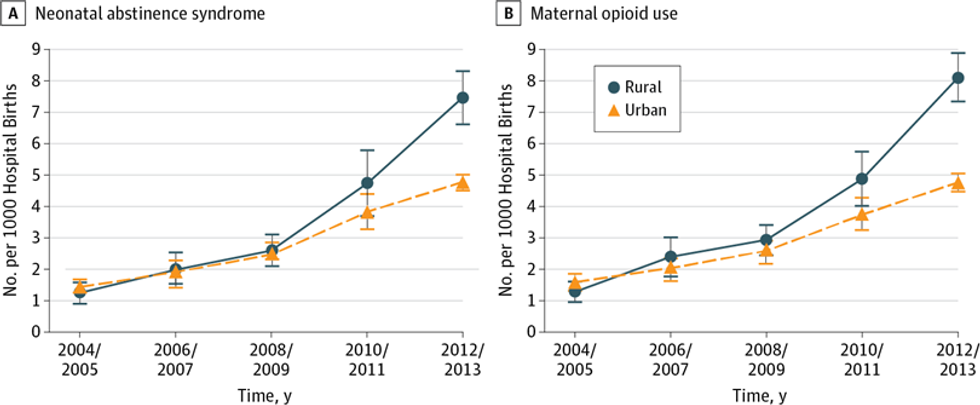As a practitioner of social services in a large city, my focus is on the issues present in this setting. Inner city issues revolve around violence and poverty, and though there is much for our communities to work through, there is no shortage of social services. Rural America does not usually get this much attention.
Over time, millions of Americans have moved into suburban or urban areas and that is the main concentration of our society, and therefore the mainstage for contention, social and racial issues etc. Just this December 12th, the JAMA Network, published unsettling statistics stating that there has been a very significant increase in newborns addicted to opioids (neonatal abstinence syndrome) and a large concentration of this falls in rural America.
This raises a plethora of concerns and discussion regarding the general health of these rural communities, the causes of high opiate usage, and their access to healthcare. To successfully cure an opioid addiction, the patient needs to go to an addiction clinic or medical facility with that kind of care every day to receive the medical treatment needed, as well as mental health services. The New York Times quoted Dr. Nicole Villapiano, a pediatrician at C. S. Mott Children’s Hospital at the University of Michigan and the lead author of the new study, Women who are already addicted “may not be getting the help they need before they get pregnant.” Newborns arriving in the neonatal care unit with withdrawal symptoms, are the end product of a much larger and insidious problem. In many of these situations, pregnant women are legally prescribed opiates for such things as back pain-- so where is the disconnect? What is happening in rural America?
The data provided by JAMA Network Pediatrics, shows us a drastic increase in 2008/2009 and makes us question what exactly happened here. There are theories as to why rural drug addiction is so much of a problem overall in rural areas. Lack of access to consistent health care and poverty/economic status are among those theories. In rural communities it is much more difficult to gain access to health care simply due to distance. And further drug addiction treatment programs are not readily available at all hospitals or clinics. An individual struggling with an opiate addiction commonly needs to be taking buprenorphine on a daily basis to help deal with withdrawal symptoms. Lawmakers should be very much inspired to help allocate money for more spread out onsite addiction help programs.
Now the departure between urban and rural takes off in 2008-2009, this was also the time of the great financial crisis. This was a massive mortgage and foreclosure disaster comparable to the Great Depression that affected nearly every American family, and there has been some research that linked increased substance usage to the crisis. Now was that specifically opiate usage? Not necessarily, but an interesting connection nonetheless. Housing instability, unemployment and significant financial stress can definitely cause issues within a family and a community.
The element of poverty is another factor that no doubt contributes. Poverty is a concern and is present in urban centers, however, those in poverty in a larger city at least can have access to nonprofit organizations and government offices that offer employment aid, food assistance and more importantly, addiction treatment. In rural areas these kinds of resources simply do not exist within reasonable reach.
Nevertheless, there is a great hope that lawmakers and representatives of these communities are pressured and motivated to innovate ways to confront this issue. There very well may be significant and visible benefits to establishing addiction treatment facilities in common medical clinics and hospitals in rural America. Infants born with addiction tells us that this is an issue that has leaked far beyond what is perceived. Addiction seems to be affecting all facets of our society, up to pregnant mothers.






















